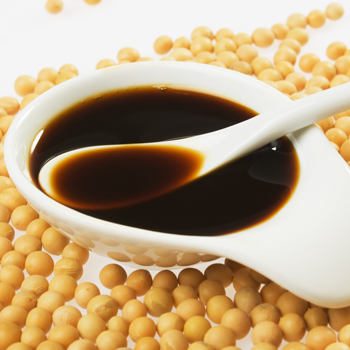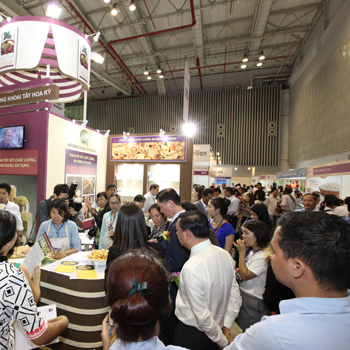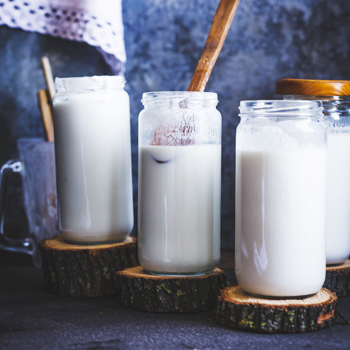ซอสถั่วเหลืองญี่ปุ่นแท้ตามมาตรฐาน JAS
หทัยภัทร ธีรศรัณย์
Hathaiphat Terasarun
Researcher
Yamamori R&D Center
hathaiphat@yamamoritrading.com
JAS (Japanese Agricultural Standard) มาตรฐานการเกษตรของญี่ปุ่น จัดตั้งขึ้นโดยกระทรวงเกษตร ป่าไม้ และประมง (MAFF) ประเทศญี่ปุ่น เป็นระบบการตรวจรับรองผลิตภัณฑ์โดยหน่วยงาน เช่น ผู้ผลิต ผู้ประกอบการหรือบุคคลที่สามที่ให้บริการตรวจประเมินและรับรองระบบตามข้อกำหนด เพื่ออนุญาตให้สินค้าที่ผ่านการรับรองสามารถใช้เครื่องหมายมาตรฐาน JAS ติดบนฉลากของผลิตภัณฑ์ได้
ซอสถั่วเหลืองญี่ปุ่น…หนึ่งในรายการสินค้ามาตรฐาน JAS
มาตรฐาน JAS ระบุว่าซอสถั่วเหลืองญี่ปุ่น หรือ “โชยุ” นั้นมีหลากหลายประเภท อาทิ “โคอิคุชิโชยุ” ซอสถั่วเหลืองแบบทั่วไป “อุซุคุจิโชยุ” ซอสถั่วเหลืองชนิดสีอ่อน “ทามาริโชยุ” ซอสถั่วเหลืองที่ใช้ข้าวสาลีเป็นวัตถุดิบในปริมาณต่ำหรือไม่ใช้เลย “ซาอิชิโคมิโชยุ” ซอสถั่วเหลืองที่ถูกนำกลับมาหมักซ้ำ “ชิโรโชยุ” ซอสถั่วเหลืองที่มีสีอ่อนกว่าอุซุคุจิโชยุ และ “คิอาเกะ” ซอสถั่วเหลืองดิบ โดยซอสถั่วเหลืองแต่ละชนิดจะมีลักษณะเฉพาะตัวที่ไม่เหมือนกันและยังใช้สำหรับอาหารที่แตกต่างกันด้วย
“คิอาเกะ” ซอสถั่วเหลืองดิบ
คือ โชยุที่ผลิตโดยไม่ผ่านกระบวนการให้ความร้อน ทำให้ซอสถั่วเหลืองมีรสชาติและกลิ่นน้อยกว่าปกติ รวมถึงยังส่งผลให้มีจุลินทรีย์ที่มีชีวิตและเอนไซม์ที่ทำงานได้คงเหลืออยู่อีกด้วย โชยุชนิดดังกล่าวจึงค่อนข้างมีความเป็นเอกลักษณ์และน่าสนใจ เนื่องจากเอนไซม์ที่เหลืออยู่นั้นเป็นประโยชน์ในการปรุงอาหาร เช่น เนื้อสัตว์ที่หมักด้วย “คิอาเกะ” ประมาณ 30 นาที สามารถลดกลิ่นที่ไม่พึงประสงค์ของเนื้อ และยังให้เนื้อสัมผัสที่นุ่มและชุ่มฉ่ำเมื่อเทียบกับการหมักด้วยซอสถั่วเหลืองประเภทอื่น
JAS (Japanese Agricultural Standard) was established by the Ministry of Agriculture, Forestry and Fisheries of Japan. The JAS system is the certification system to allow to attach the JAS marks to the products which are produced and inspected by the only certified business entities such as producers, manufacturers or the others certified by the Registered Certifying Bodies of third party organization.
Japanese Soy Sauce: One of the Items Listed in JAS Products
In terms of Japanese soy sauce, in JAS, “Shoyu” means soy sauce in Japanese which is classified into various types: Koikuchi shoyu (Common soy sauce), Usukuchi shoyu (Light color soy sauce), Tamari shoyu, Saishikomi shoyu (Refermented soy sauce), Shiro shoyu (Extra light color soy sauce) and Kiage (Raw soy sauce). Each type of soy sauce has its unique character and is selected to use for specific cuisines.
Raw Soy Sauce (Kiage)
Kiage (Raw soy sauce), on the other hand, is literally produced without heating process, microbes still remain as same as active enzymes, which cause particular soy sauce aroma and taste are less than common. Kiage is quite unique and interesting if the remaining enzymes usefully work on food stuff for cooking, for example, 30-minute marinated meat by Kiage can reduce unexpected meat smell together with enhance tender and juicy texture compare to another type of soy sauce.









